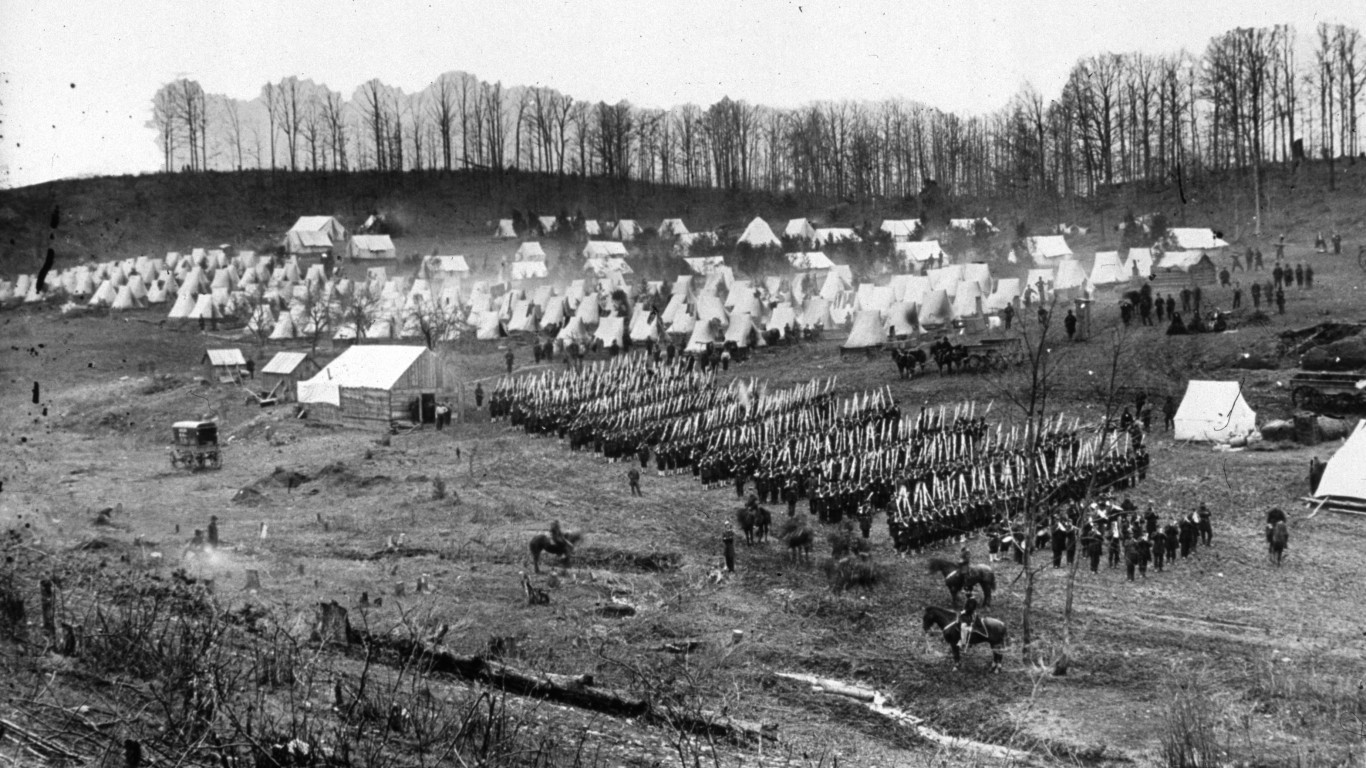
This post may contain links from our sponsors and affiliates, and Flywheel Publishing may receive
compensation for actions taken through them.
The American Civil War began with the Attack on Fort Sumter in April 1861, and ended four years later, with General Robert E. Lee’s surrender at Appomattox. During the war, as many as 3.9 million troops were mobilized to fight, and an estimated 620,000 were killed. Against today’s population base, this is comparable to about 41.5 million troops and 6.5 million fatalities.
In support of their respective causes, the Union and Confederate sides of the war raised armies of unprecedented size. Typically structured in distinct, hierarchical fighting units – from smaller regiments to larger brigades, divisions, and corps – the armies of the Civil War often counted tens of thousands of troops in their ranks.
The circumstances of the Civil War were constantly shifting, and so too were the strategies and short-term objectives of the two sides. To adapt, many armies of the Civil War existed for only a few months before being dissolved and integrated into new or existing armies. Still, others lasted for years.
Using data from An Encyclopedia of American History, a peer reviewed reference guide, 24/7 Wall St. identified the largest and most important armies of the Civil War. We ranked the 10 largest Union and 10 largest Confederate armies by reported troop strength. It is important to note that for each army on this list, troop size varied considerably throughout the war, and reported figures represent only a snapshot of their ranks. In cases where estimates of a single army’s troop count was provided as a range, we favored the larger enlistment figure.
The Confederacy was outmanned and outgunned by their Union adversaries throughout the war. Nearly 2.7 million soldiers enlisted to fight for the Union, compared to a high-end estimate of only 1.2 million Confederate troops. As a result, Confederate armies were often smaller than Union armies. All of the five smallest armies on this list fought on the Confederate side, while three of the five largest armies belonged to the Union. (Here is a look at the most commonly used firearms in the Civil War.)
The largest and most important armies of both the Union and Confederate forces were their primary fighting force in the Eastern Theater for most of the war – the Army of the Potomac on the Union side, and the Army of Northern Virginia on the Confederate side. These armies were led by some of the most well-known generals of the war, including George B. McClellan and Ambrose E. Burnside in the North, and P.G.T. Beauregard and Robert E. Lee of the South. (These are the states where the most Civil War battles were fought.)
Click here to see the 20 largest armies assembled during the Civil War.
Click here to read our detailed methodology.
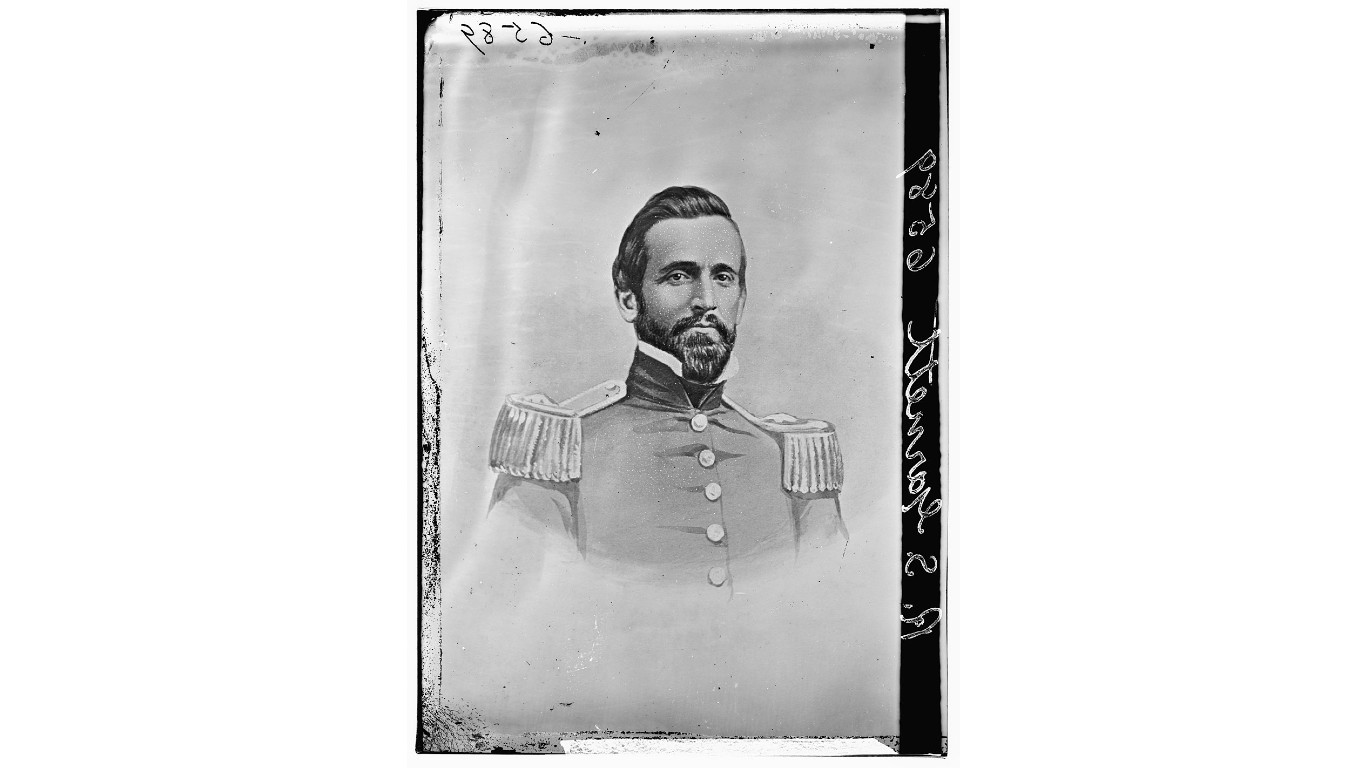
20. Army of the Northwest
> Est. troop count: 11,000
> Side of the conflict: Confederate
> Active between: June 1861 – February 1862
> Notable battle(s): Battle of Rich Mountain, Battle of Cheat Mountain, Romney Expedition
> Commander(s): Robert S. Garnett, Henry R. Jackson, William Loring
[in-text-ad]
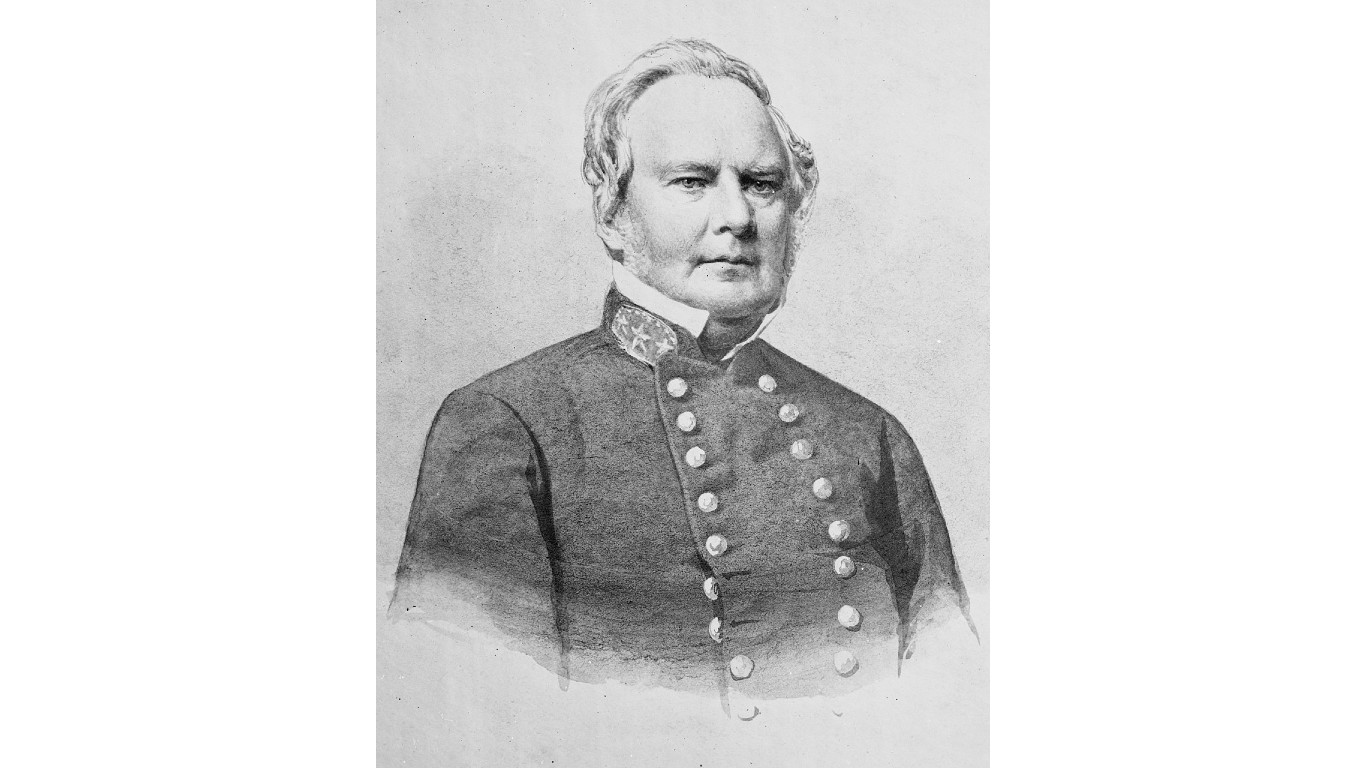
19. Army of Missouri
> Est. troop count: 12,000
> Side of the conflict: Confederate
> Active between: August 1864 – September 1864
> Notable battle(s): Battle of Fort Davidson, Second Battle of Lexington, Second Battle of Independence, Battle of Byram’s Ford, Battle of Westport, Battle of Mine Creek, Second Battle of Newtonia
> Commander(s): Sterling Price
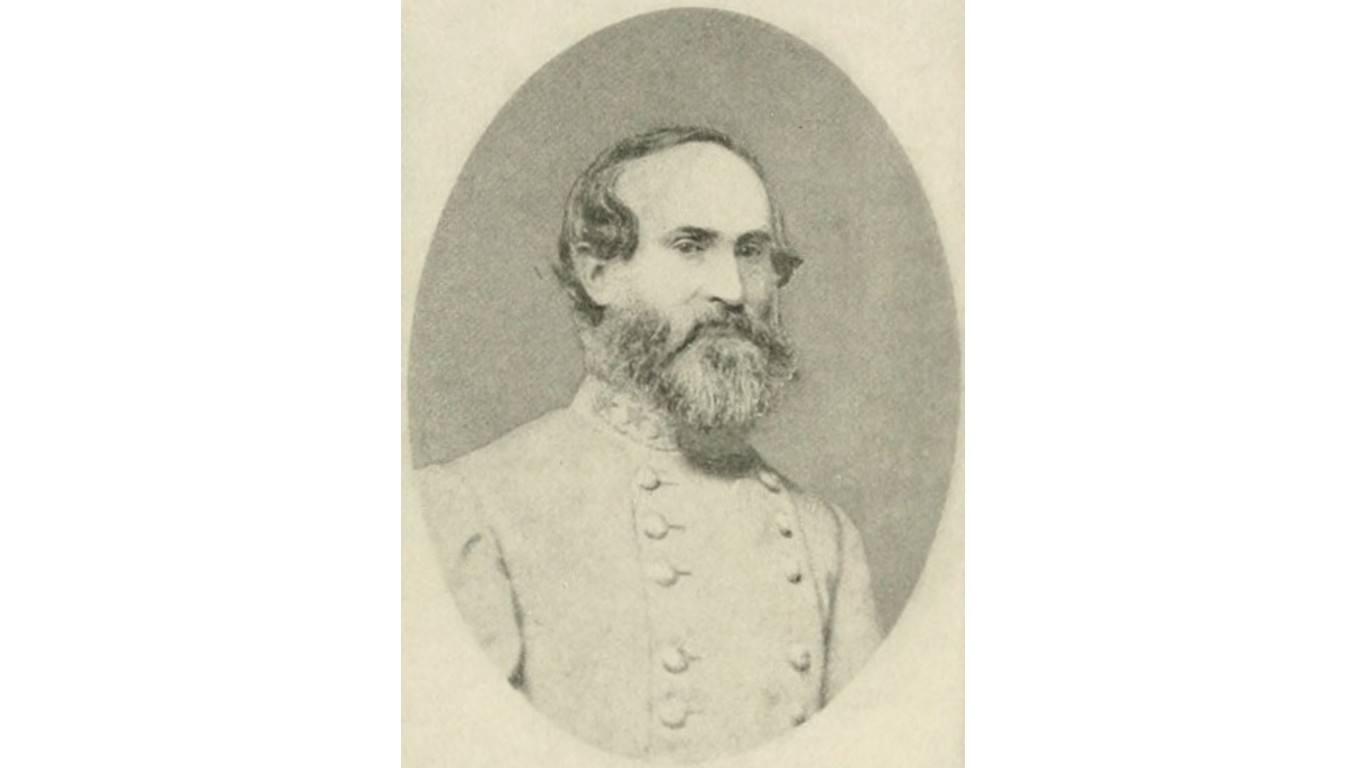
18. Army of the Valley
> Est. troop count: 14,000
> Side of the conflict: Confederate
> Active between: June 1864 – March 1865
> Notable battle(s): Battle of Lynchburg, Battle of Monocacy, Second Battle of Kernstown, Second Battle of Martinsburg, Third Battle of Winchester, Battle of Fisher’s Hill, Battle of Tom’s Brook, Battle of Cedar Creek
> Commander(s): Jubal A. Early
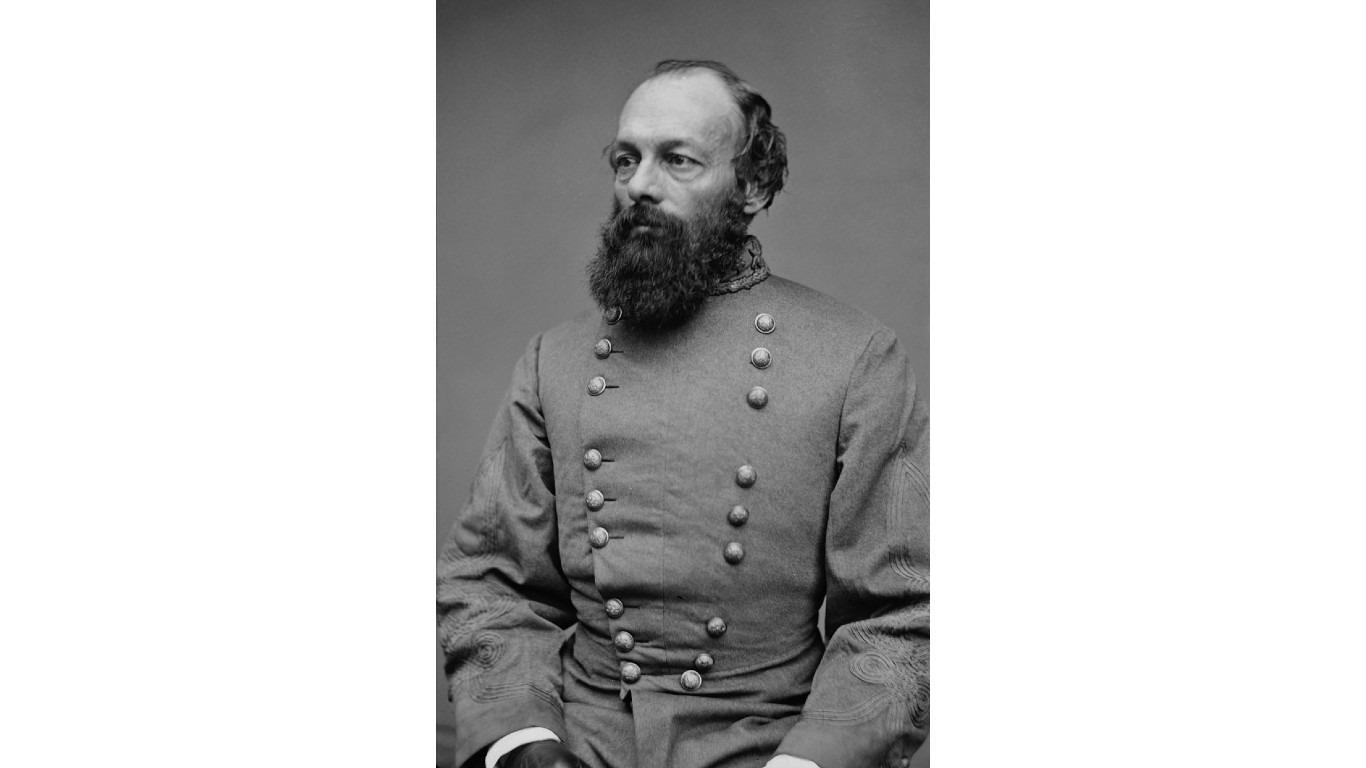
17. Army of Kentucky
> Est. troop count: 15,000
> Side of the conflict: Confederate
> Active between: August 1862 – November 1862
> Notable battle(s): Battle of Richmond
> Commander(s): Kirby Smith
[in-text-ad-2]
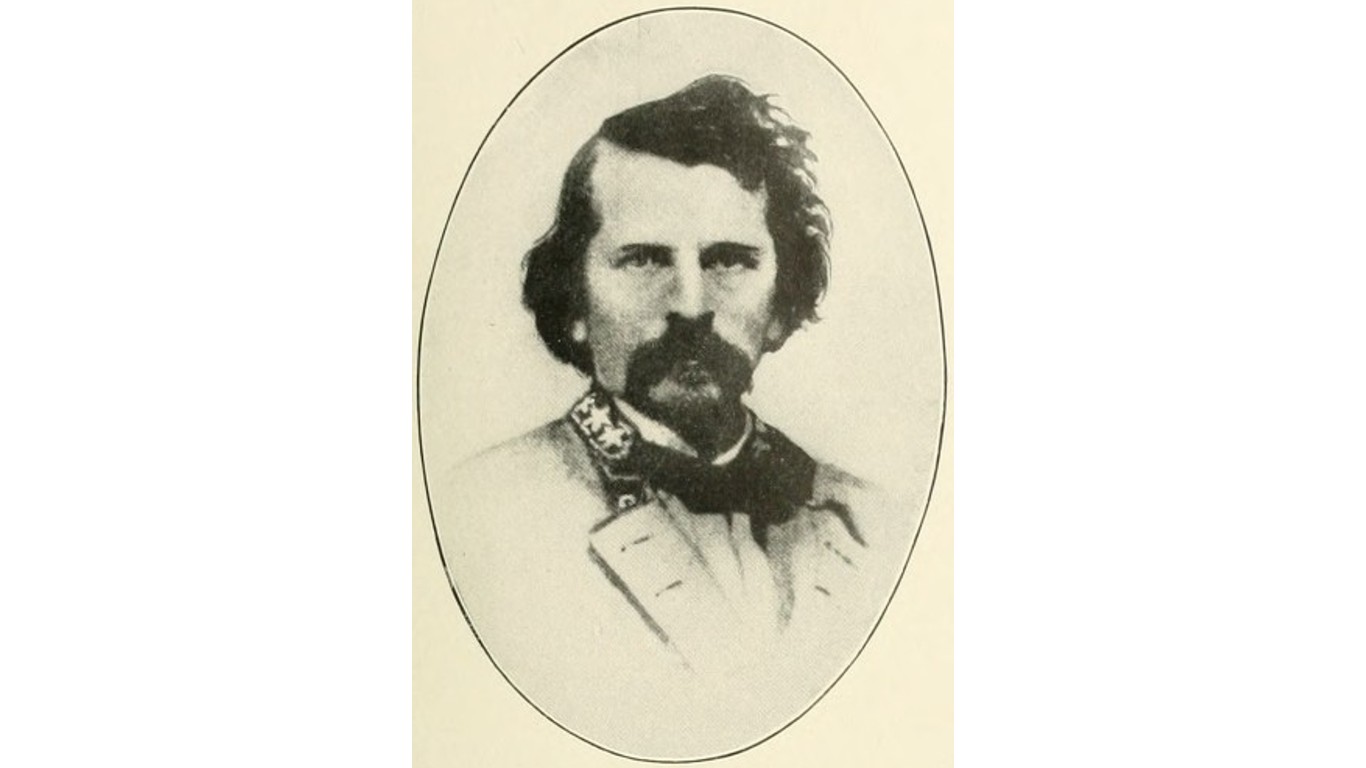
16. Army of the West
> Est. troop count: 16,000
> Side of the conflict: Confederate
> Active between: January 1862 – September 1862
> Notable battle(s): Battle of Pea Ridge, Battle of Iuka
> Commander(s): Earl Van Dorn, John P. McCown, Sterling Price
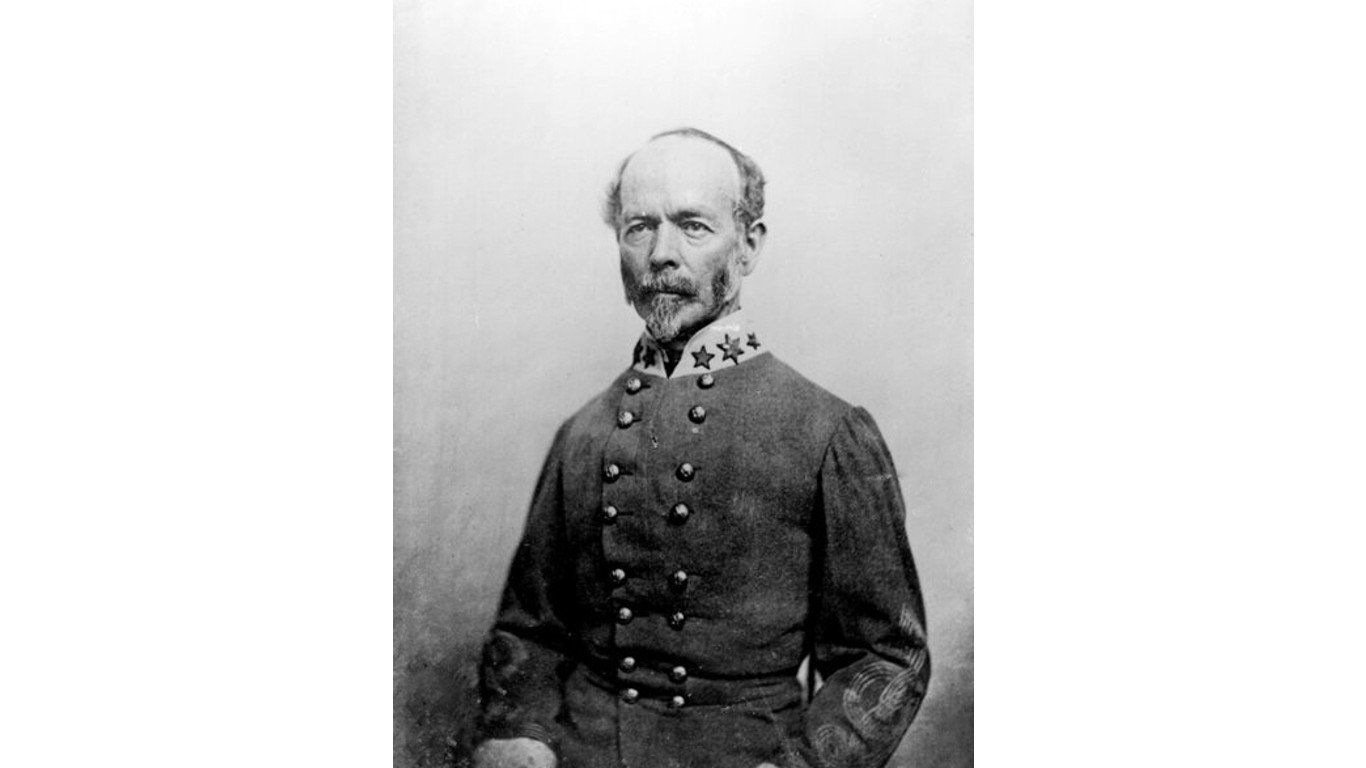
15. Army of the South
> Est. troop count: 25,000
> Side of the conflict: Confederate
> Active between: February 1865 – April 1865
> Notable battle(s): Battle of Averasboro, Battle of Bentonville
> Commander(s): Joseph E. Johnston
[in-text-ad]
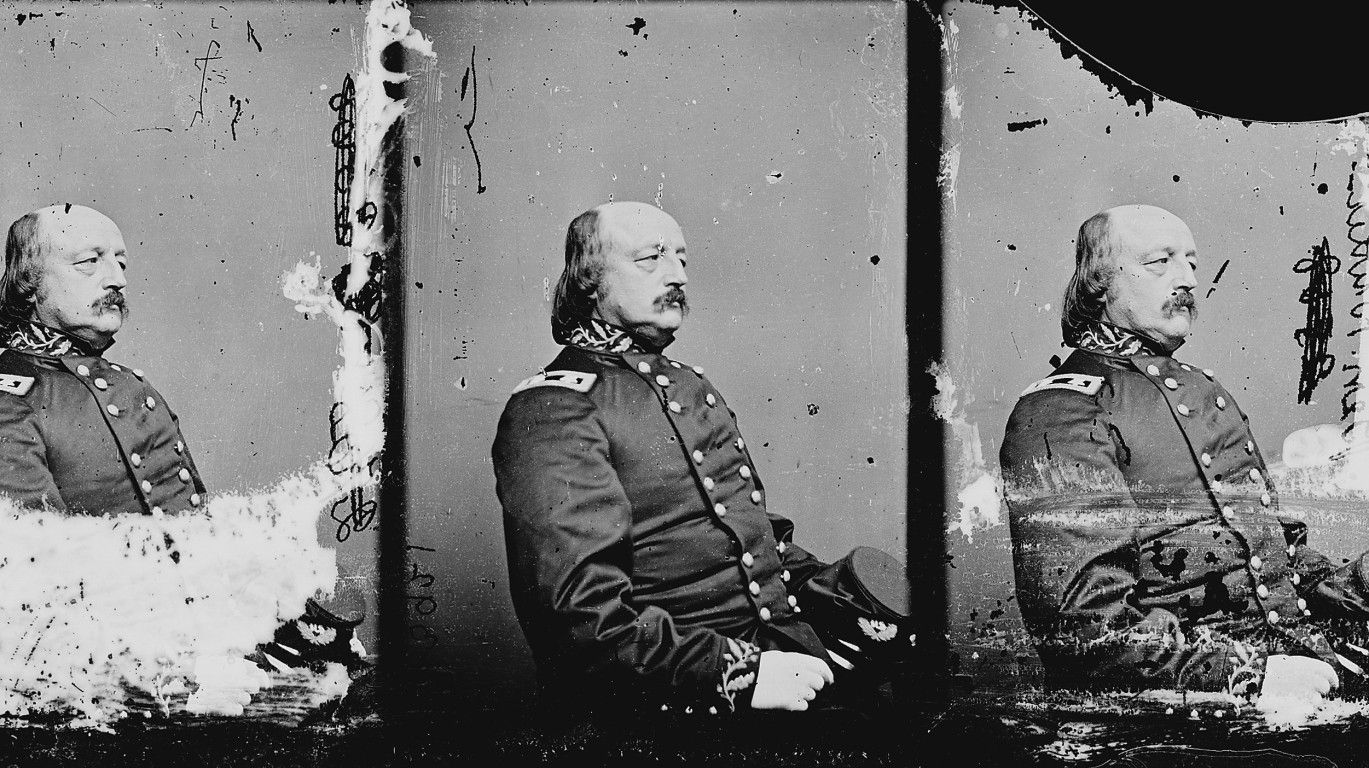
14. Army of the James
> Est. troop count: 30,000
> Side of the conflict: Union
> Active between: April 1864 – February 1866
> Notable battle(s): Battle of Petersburg I, Second Battle of Petersburg, Battle of Chaffin’s Farm, Battle of New Market
> Commander(s): Benjamin F. Butler, Edward O. C. Ord
13. Second Army of the Ohio
> Est. troop count: 30,000
> Side of the conflict: Union
> Active between: May 1963 – January 1965
> Notable battle(s): Battle of Columbia, Battle of Spring Hill, Battle of Nashville
> Commander(s): Ambrose Burnside, John G. Foster, John M. Schofield, Jacob D. Cox
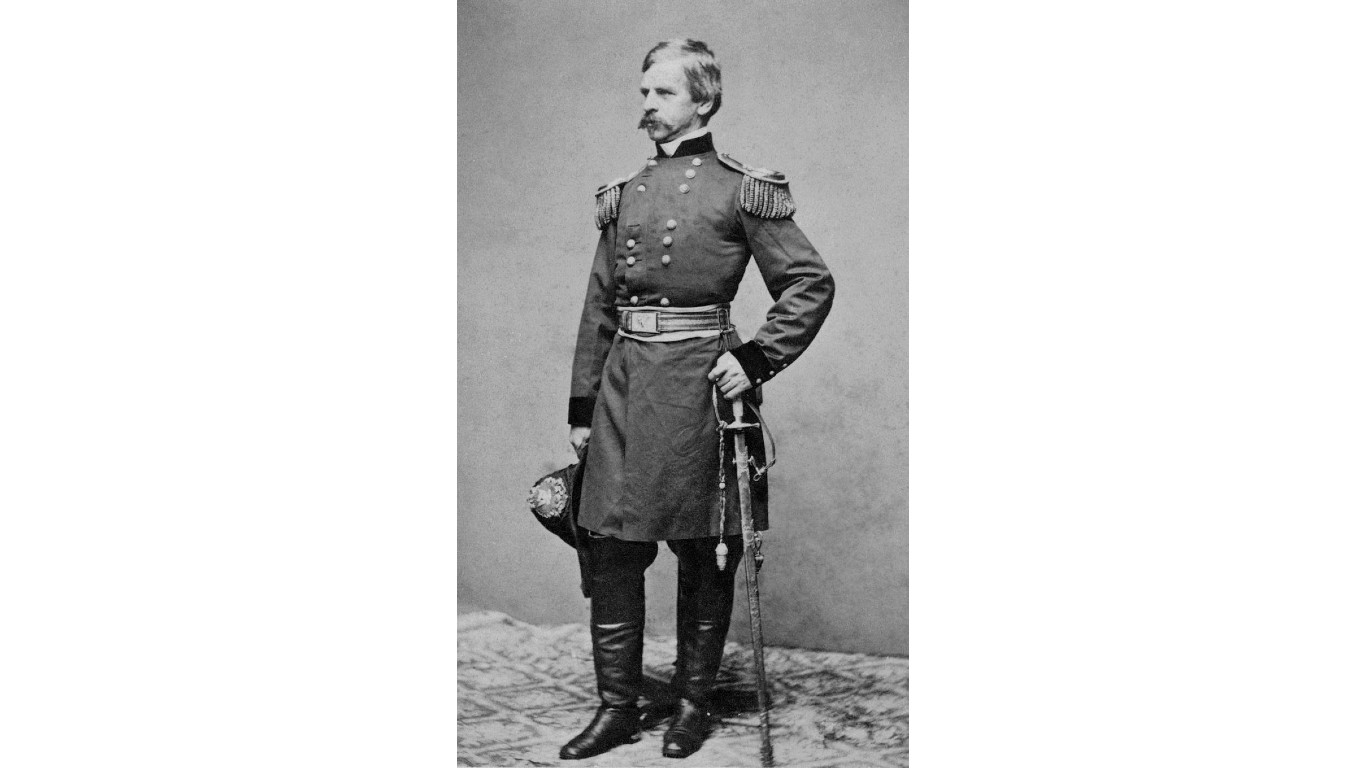
12. Army of the Gulf
> Est. troop count: 30,000
> Side of the conflict: Union
> Active between: February 1862 – July 1865
> Notable battle(s): Battle of Fort Bisland, Battle of Irish Bend, Siege of Port Hudson, Red River Campaign
> Commander(s): Benjamin F. Butler, Nathaniel P. Banks, Stephen A. Hurlbut, Edward Canby
[in-text-ad-2]
11. Army of Northeast Virginia
> Est. troop count: 35,000
> Side of the conflict: Union
> Active between: May 1861 – July 1862
> Notable battle(s): First Battle of Bull Run
> Commander(s): Irvin McDowell
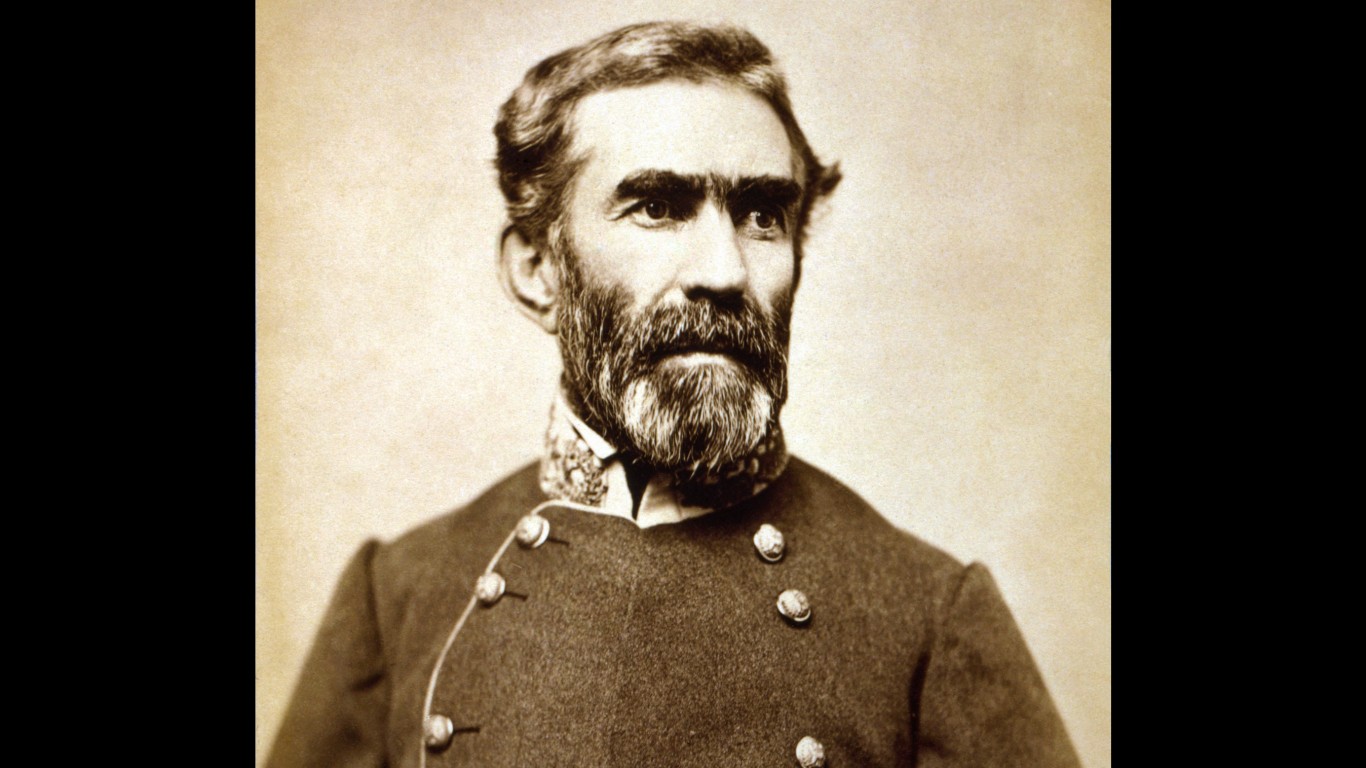
10. Army of Tennessee
> Est. troop count: 38,000
> Side of the conflict: Confederate
> Active between: November 1862 – April 1865
> Notable battle(s): Battle of Stones River, Battle of Hoover’s Gap, Battle of Chickamauga, Battle of Peachtree Creek, Battle of Atlanta, Battle of Utoy Creek,Battle of Jonesboro, Battle of Franklin
> Commander(s): Braxton Bragg, William J. Hardee, Joseph E. Johnston, John Bell Hood, Richard R. Taylor
[in-text-ad]
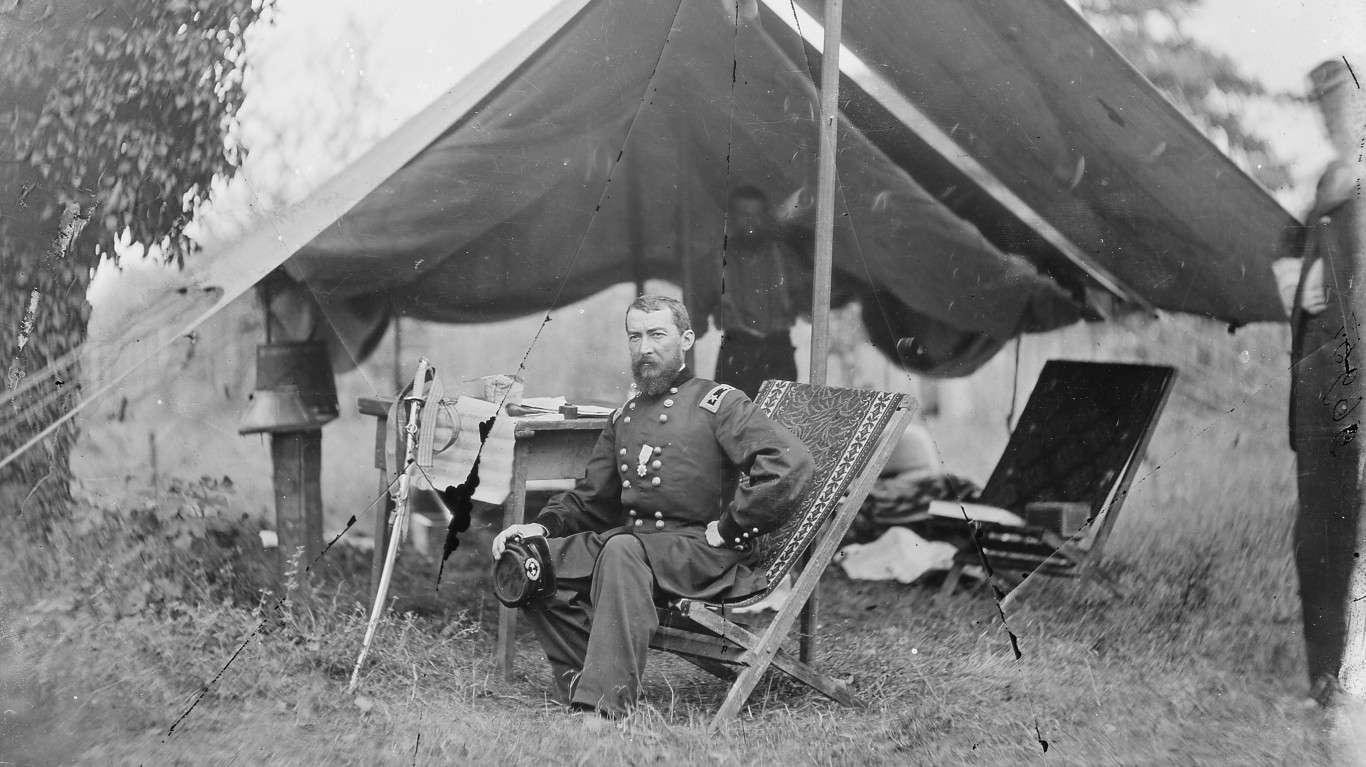
9. Second Army of the Shenandoah
> Est. troop count: 50,000
> Side of the conflict: Union
> Active between: August 1864 – June 1865
> Notable battle(s): Battle of Opequon, Battle of Fisher’s Hill, Battle of Tom’s Brook, Battle of Cedar Creek
> Commander(s): Philip H. Sheridan, A. T. A. Torbert, Winfield Scott Hancock
8. Army of Virginia
> Est. troop count: 50,000
> Side of the conflict: Union
> Active between: June 1862 – September 1862
> Notable battle(s): Second Battle of Bull Run
> Commander(s): John Pope
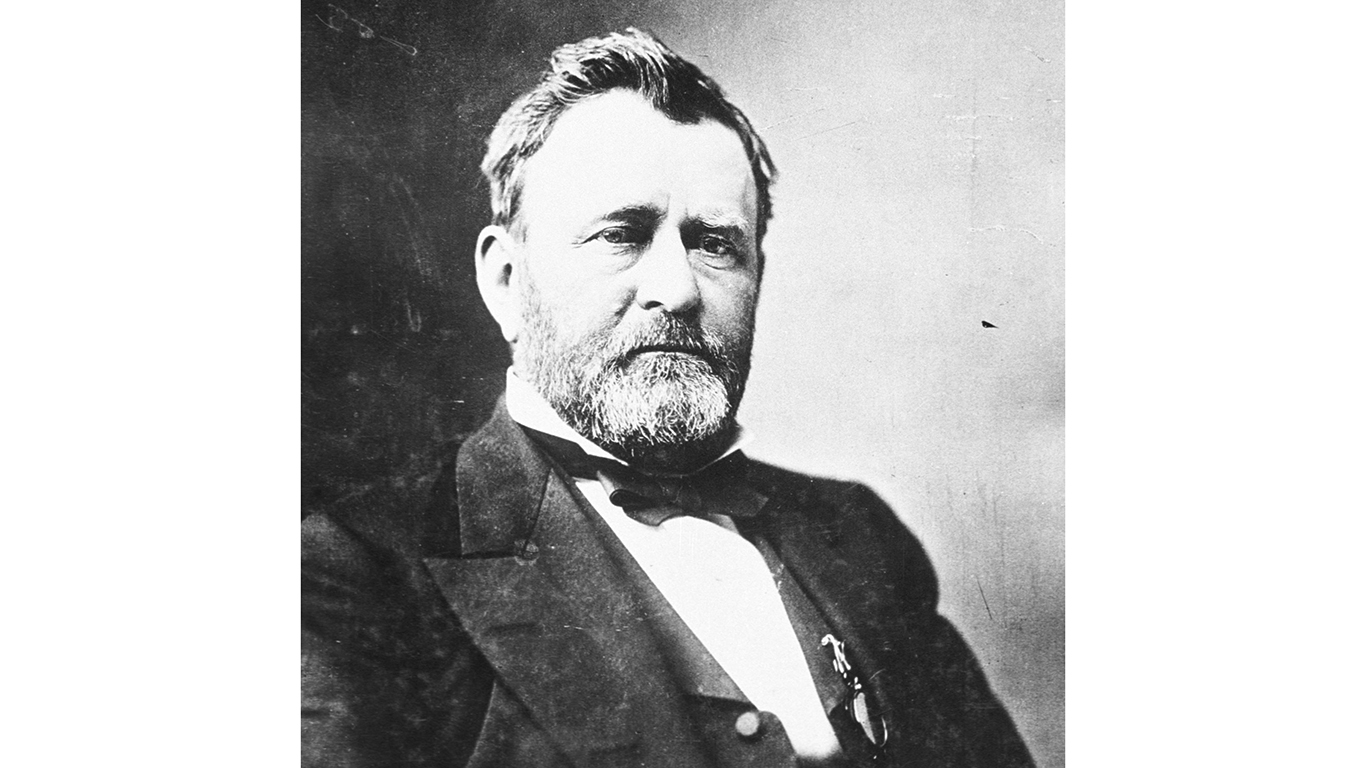
7. Army of the Tennessee
> Est. troop count: 50,000
> Side of the conflict: Union
> Active between: 1862 – August 1865
> Notable battle(s): Battle of Shiloh, Battle of Meridian, Battle of Atlanta
> Commander(s): Ulysses S. Grant, Wiliam T. Sherman, James B. McPherson, John A. Logan, Oliver O. Howard, John A. Logan
[in-text-ad-2]
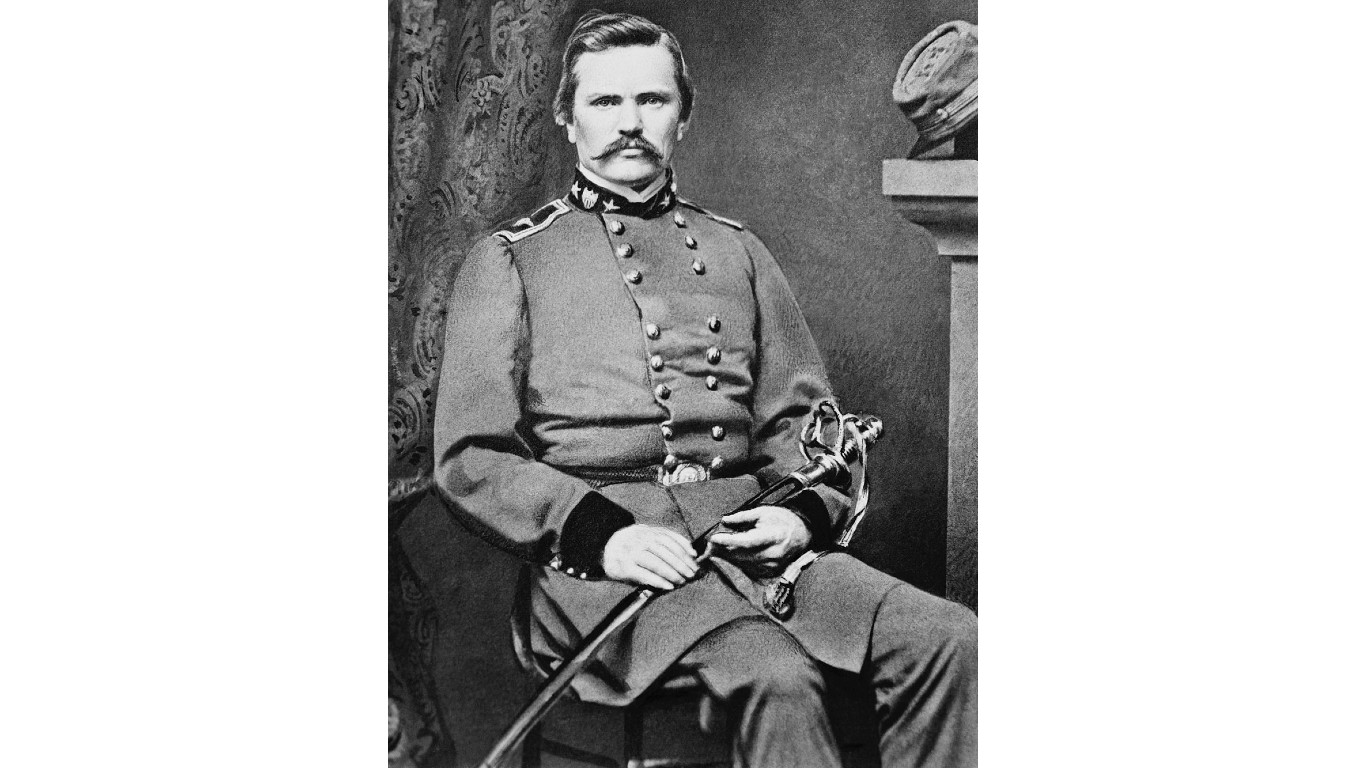
6. Army of the Trans-Mississippi Department
> Est. troop count: 50,000
> Side of the conflict: Confederate
> Active between: May 1862 – May 1865
> Notable battle(s): Battle of Mansfield, Battle of Pea Ridge
> Commander(s): Paul Octave Hébert, Thomas C. Hindman, Theophilus H. Holmes, Edmund Kirby Smith, Simon Bolivar Buckner
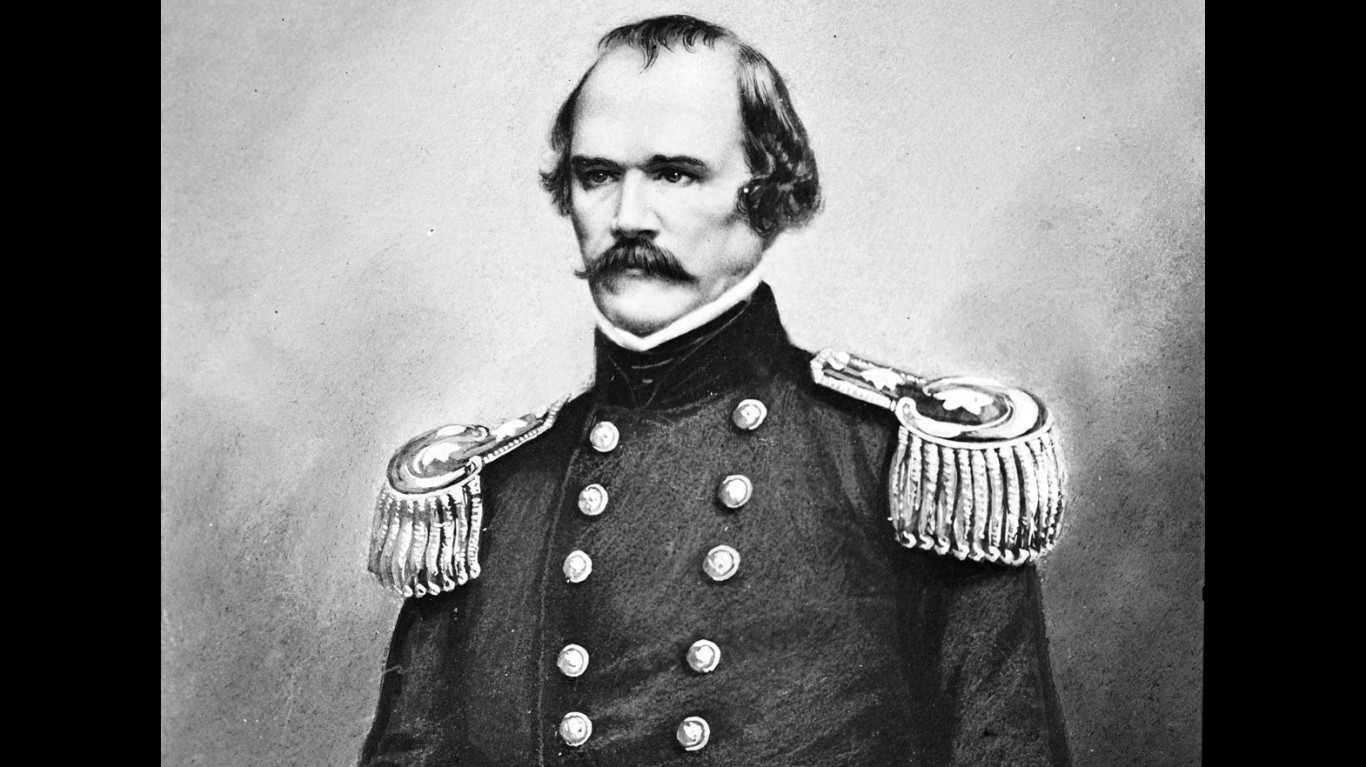
5. Army of Mississippi
> Est. troop count: 55,000
> Side of the conflict: Confederate
> Active between: March 1862 – November 1862
> Notable battle(s): Battle of Shiloh, Siege of Corinth, Battle of Munfordville, Battle of Perryville
> Commander(s): Albert Sidney Johnston, P. G. T. Beauregard, Braxton Bragg, Leonidas Polk
[in-text-ad]
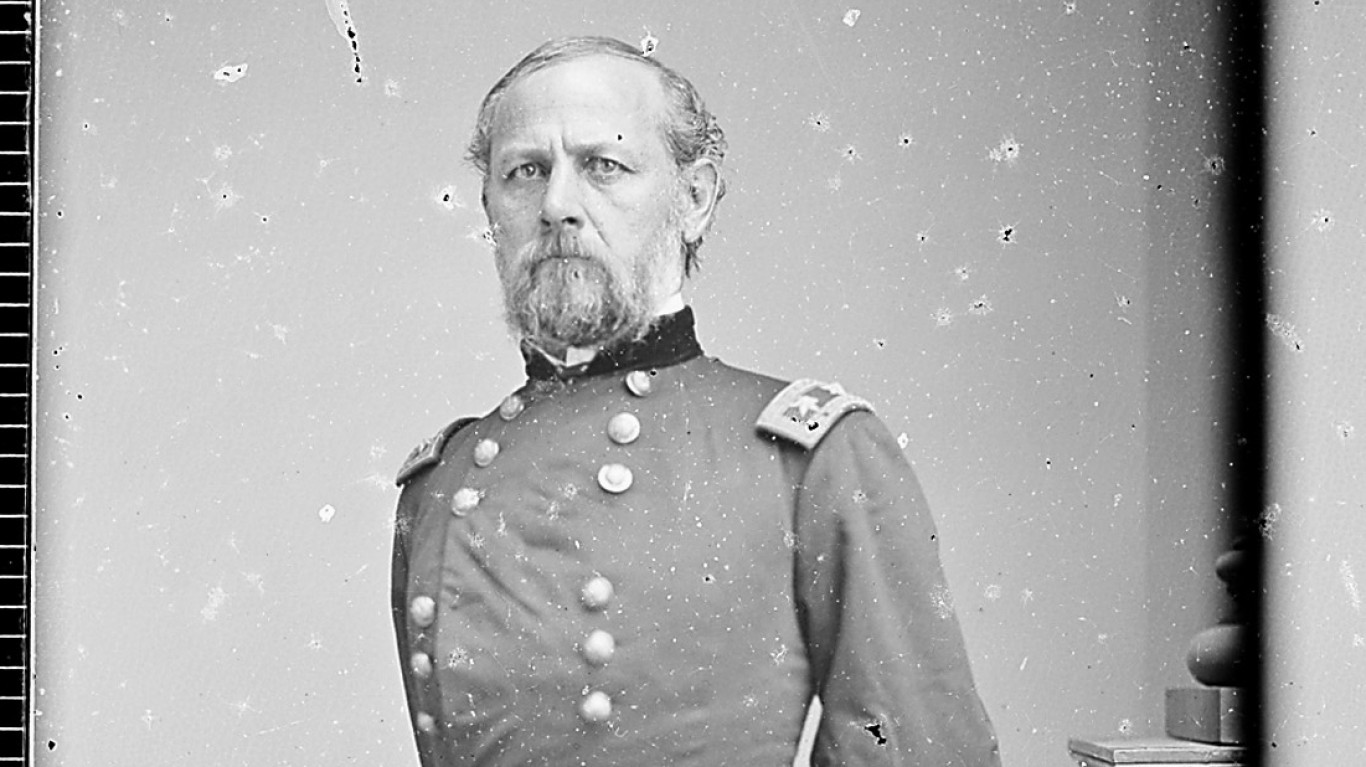
4. First Army of the Ohio
> Est. troop count: 60,000
> Side of the conflict: Union
> Active between: December 1861 – October 1862
> Notable battle(s): Battle of Mill Springs, Battle of Shiloh, Battle of Perryville
> Commander(s): Don Carlos Buell
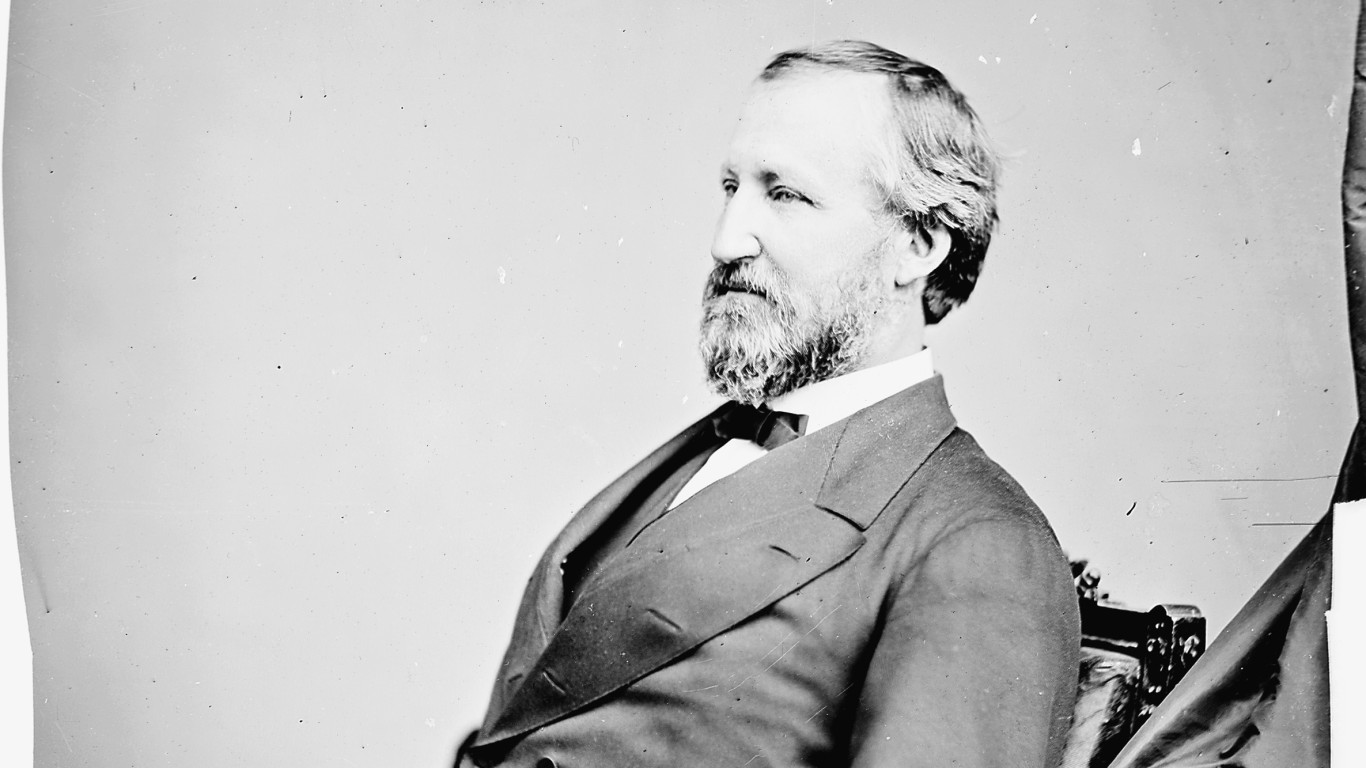
3. Army of the Cumberland
> Est. troop count: 67,000
> Side of the conflict: Union
> Active between: October 1862 – August 1865
> Notable battle(s): Battle of Stones River, Battle of Chickamauga, Battle of Missionary Ridge
> Commander(s): William S. Rosecrans, George H. Thomas, David S. Stanley
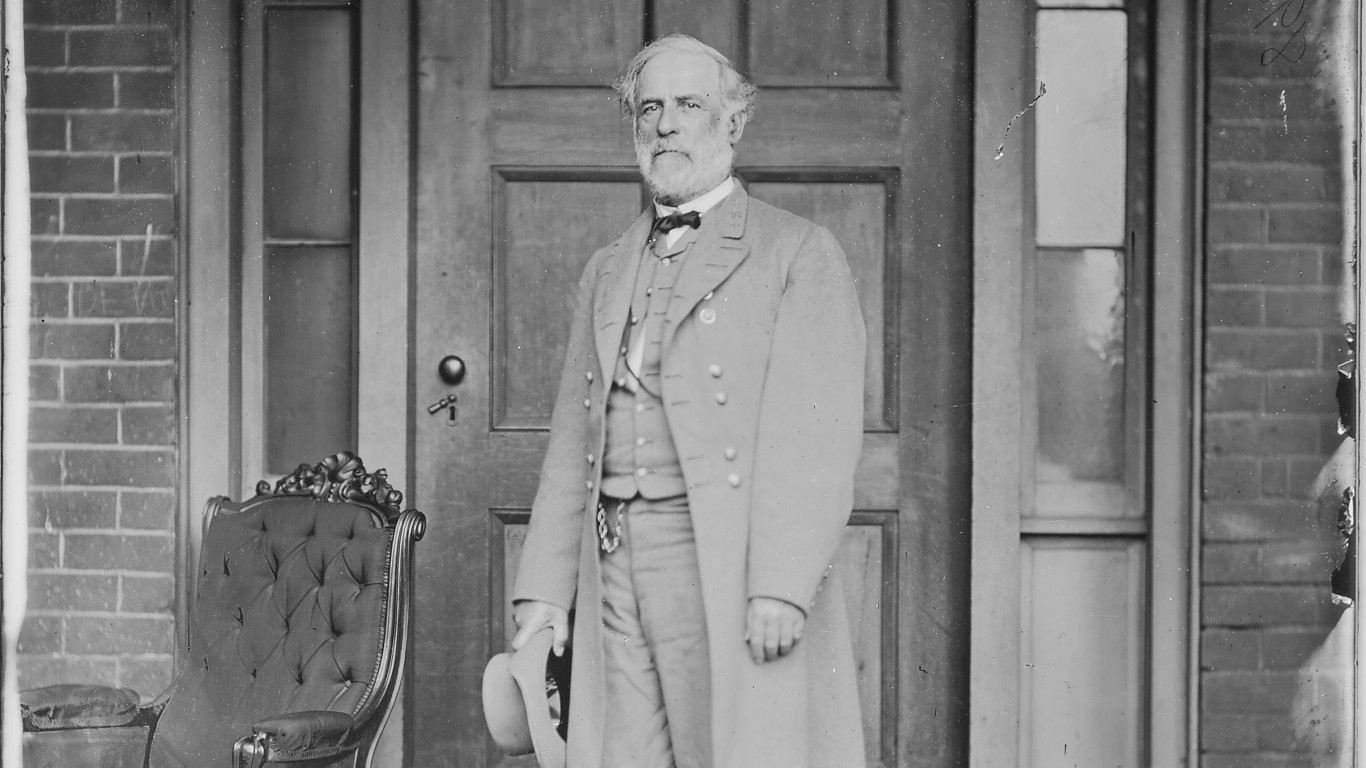
2. Army of Northern Virginia
> Est. troop count: 90,000
> Side of the conflict: Confederate
> Active between: June 1861 – April 1865
> Notable battle(s): First Battle of Bull Run, Battle of Seven Pines, Second Battle of Bull Run, Battle of Antietam, Battle of Fredericksburg, Battle of during the Chancellorsville, Battle of Gettysburg, Battle of Bristoe Station, Battle of Mine Run, Battle of the Wilderness,
> Commander(s): P.G.T. Beauregard, Joseph E. Johnston, Robert E. Lee
[in-text-ad-2]
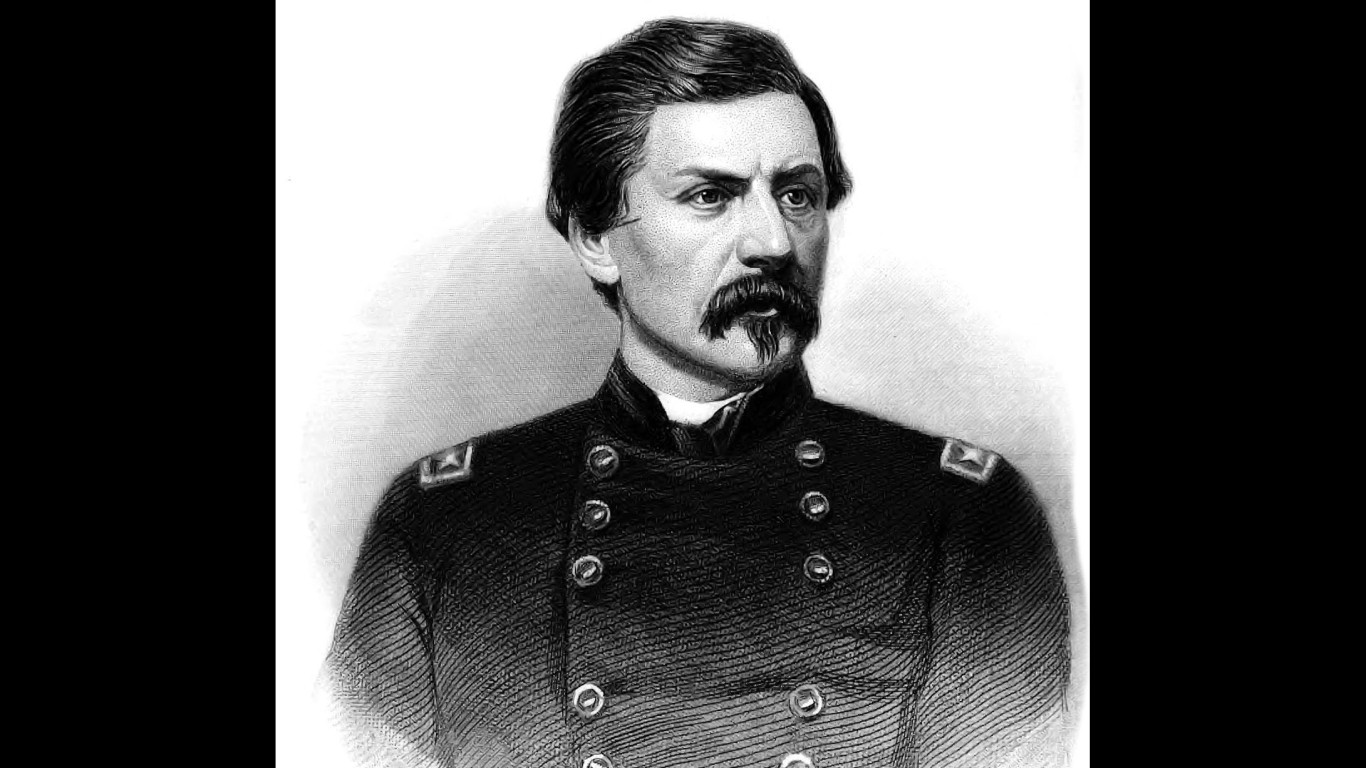
1. Army of the Potomac
> Est. troop count: 120,000
> Side of the conflict: Union
> Active between: July 1861 – June 1865
> Notable battle(s): Battle of Antietam, Battle of Fredericksburg, Battle of Chancellorsville, Battle of Gettysburg
> Commander(s): George B. McClellan, Ambrose E. Burnside, Joseph Hooker, George G. Meade
Methodology
To identify the largest and most important armies of the Civil War, 24/7 Wall St. reviewed data from a range of historical sources, primarily An Encyclopedia of American History, a peer reviewed reference guide.
We ranked the 10 largest Union and 10 largest Confederate armies by reported troop strength. It is important to note that for each army on this list, troop size varied considerably throughout the war, and reported figures represent only a snapshot of their ranks at a specific point in the war. In cases where a single army’s troop count estimates ranged, we favored the larger enlistment figure, to reflect each army’s peak strength.
The naming of these armies was sometimes unofficial, being controlled by various states’ war departments. Sometimes they had multiple names at the same time. For example, the Confederate Army of the Trans-Mississippi was also sometimes interchangeably referred to as the Army of the Southwest.
In some cases, over the course of the war there were multiple armies of the same name at different times. There were in fact four different formations at various points in the war called either the Army of Mississippi or the Army of the Mississippi. The one in our story is referring to the first, originally led by P.G.T. Beauregard.
Want to Retire Early? Start Here (Sponsor)
Want retirement to come a few years earlier than you’d planned? Or are you ready to retire now, but want an extra set of eyes on your finances?
Now you can speak with up to 3 financial experts in your area for FREE. By simply clicking here you can begin to match with financial professionals who can help you build your plan to retire early. And the best part? The first conversation with them is free.
Click here to match with up to 3 financial pros who would be excited to help you make financial decisions.
Thank you for reading! Have some feedback for us?
Contact the 24/7 Wall St. editorial team.

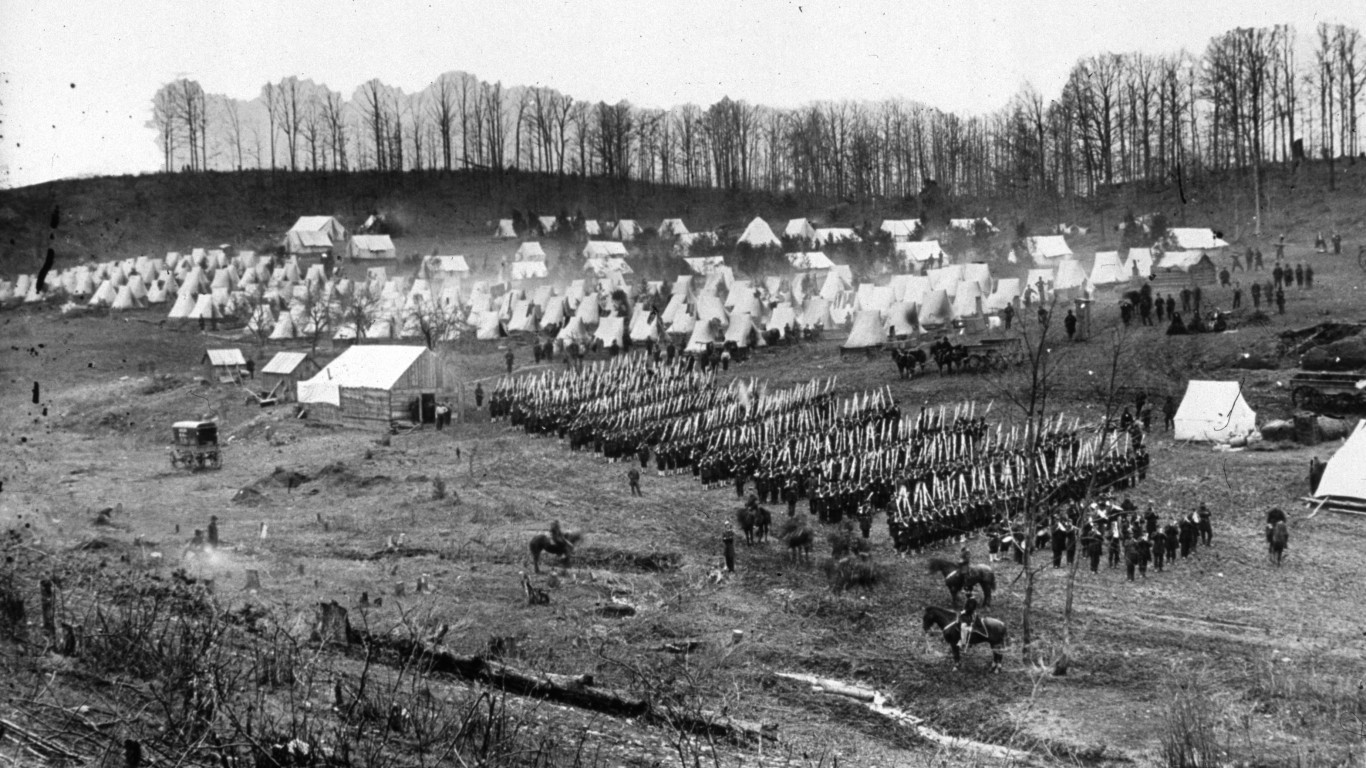 24/7 Wall St.
24/7 Wall St.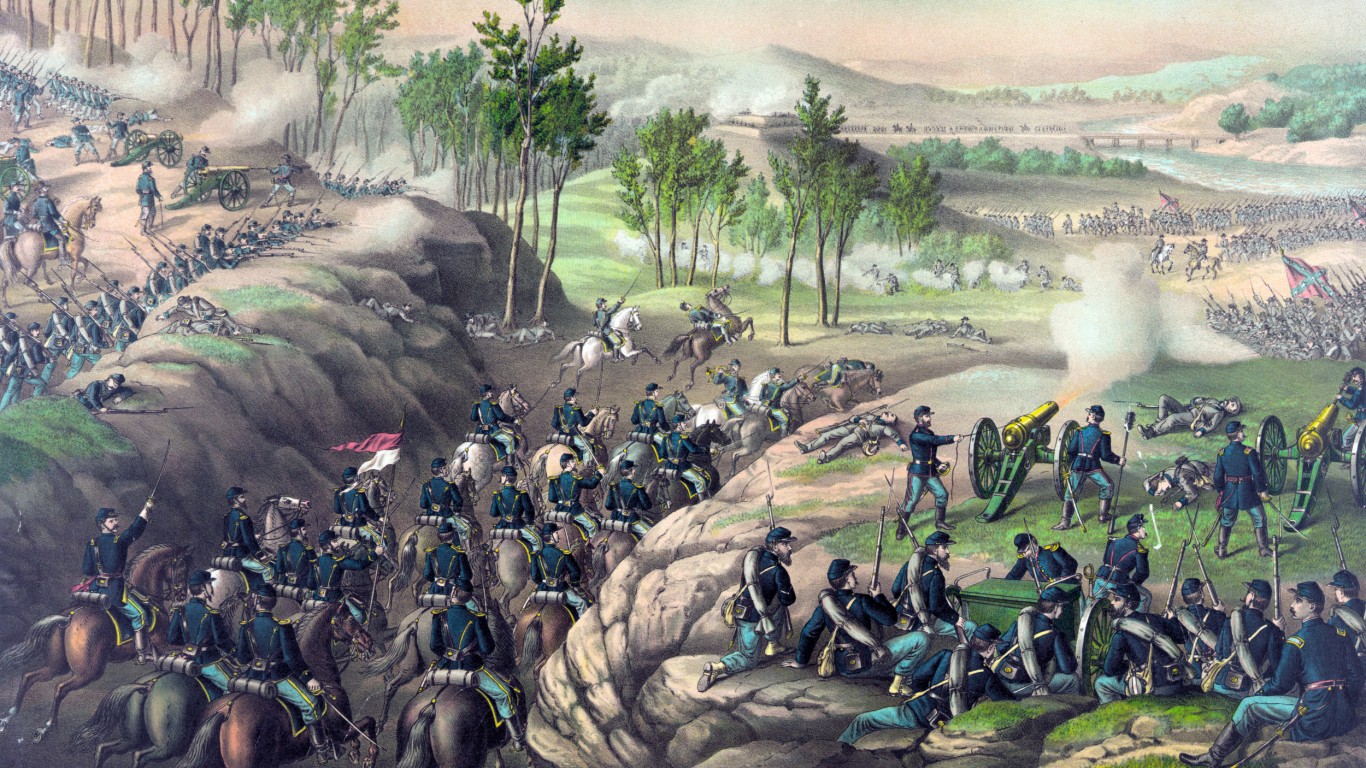 24/7 Wall St.
24/7 Wall St.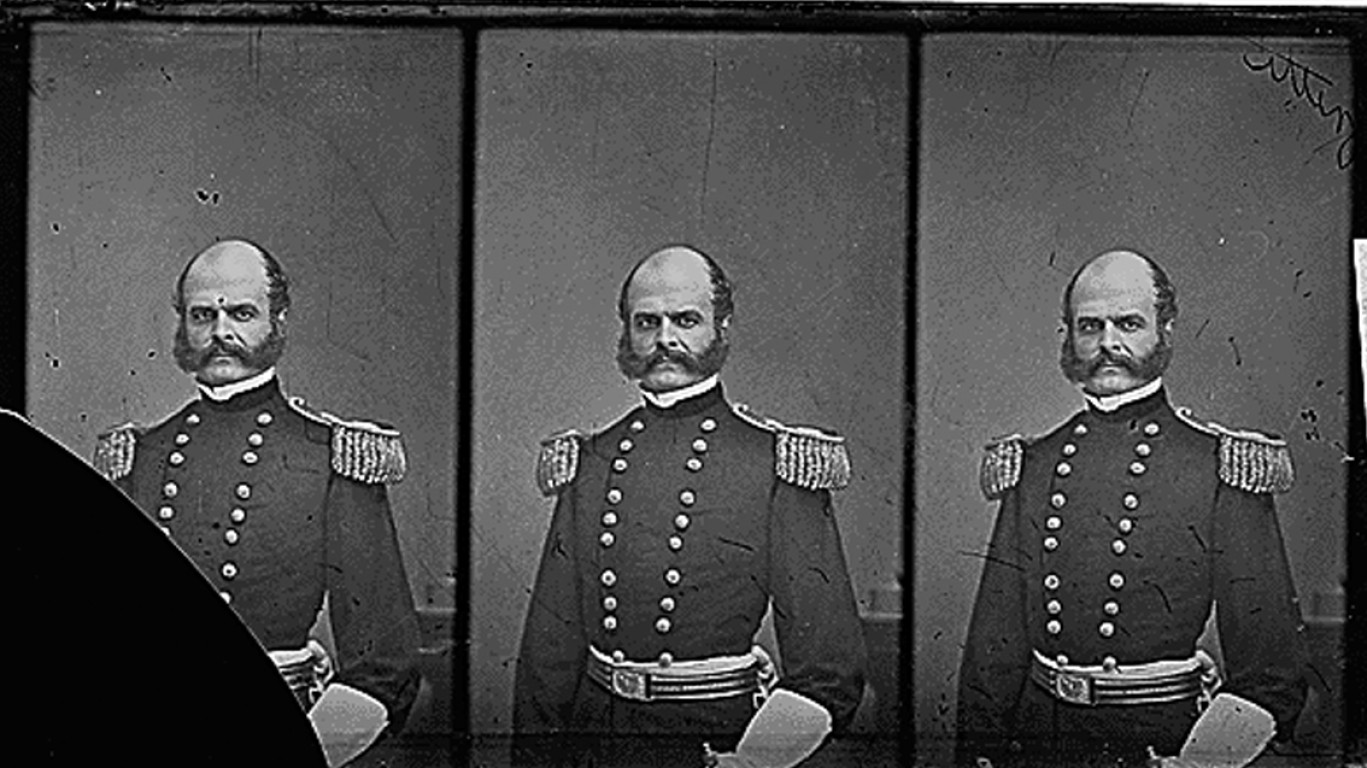
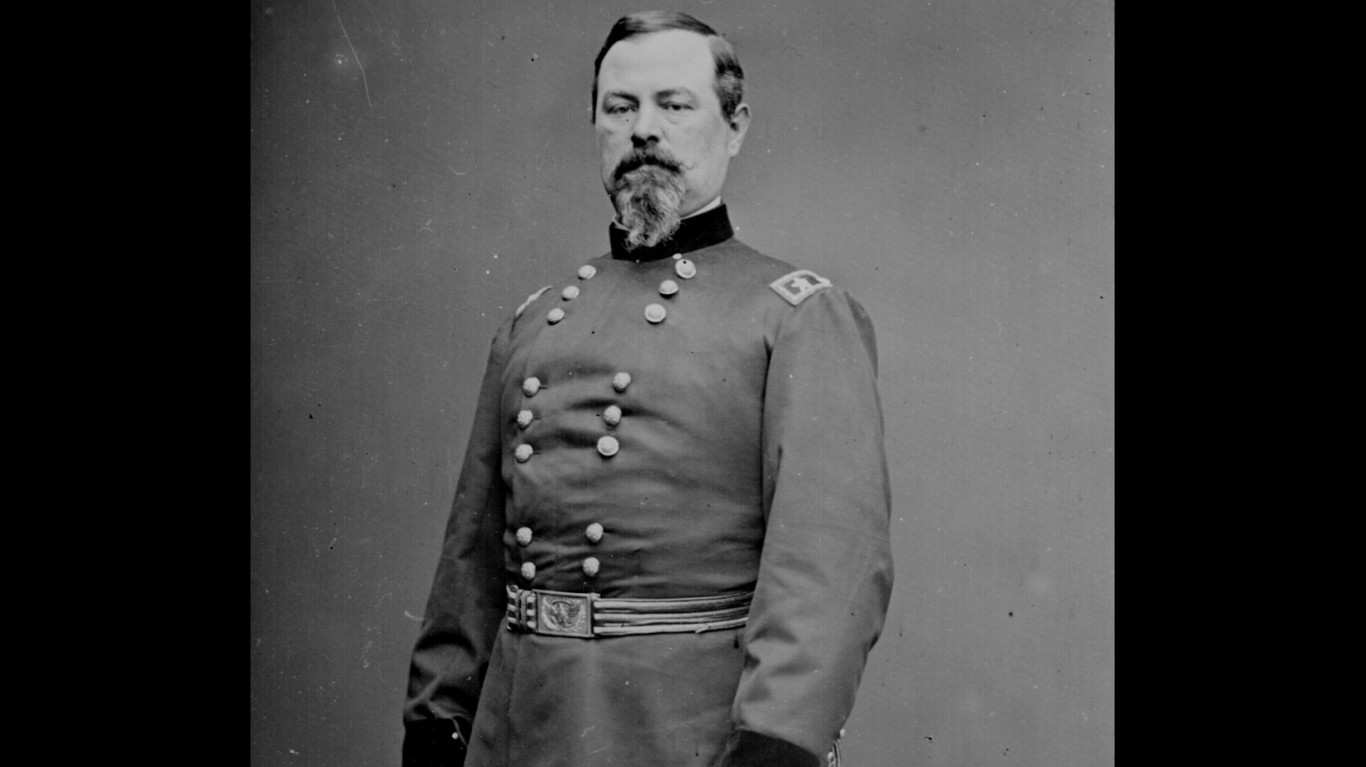
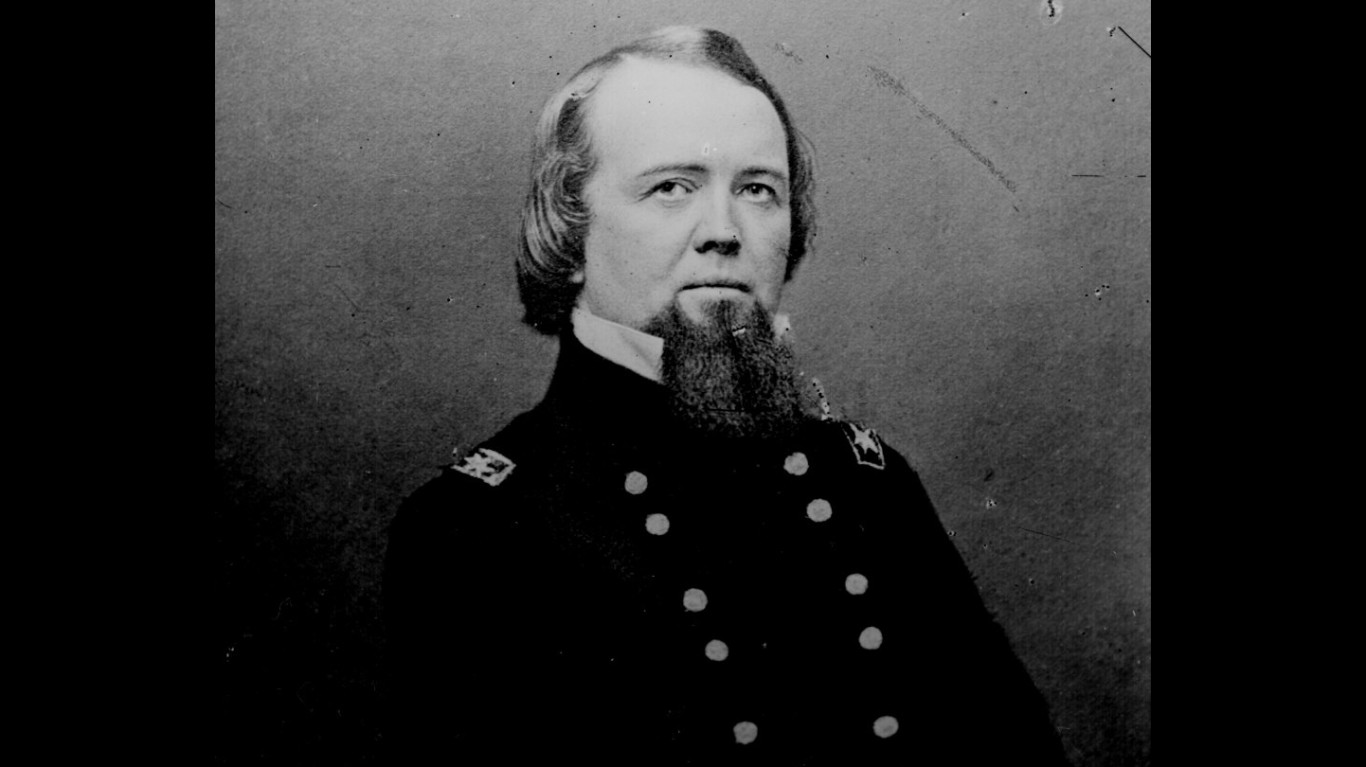
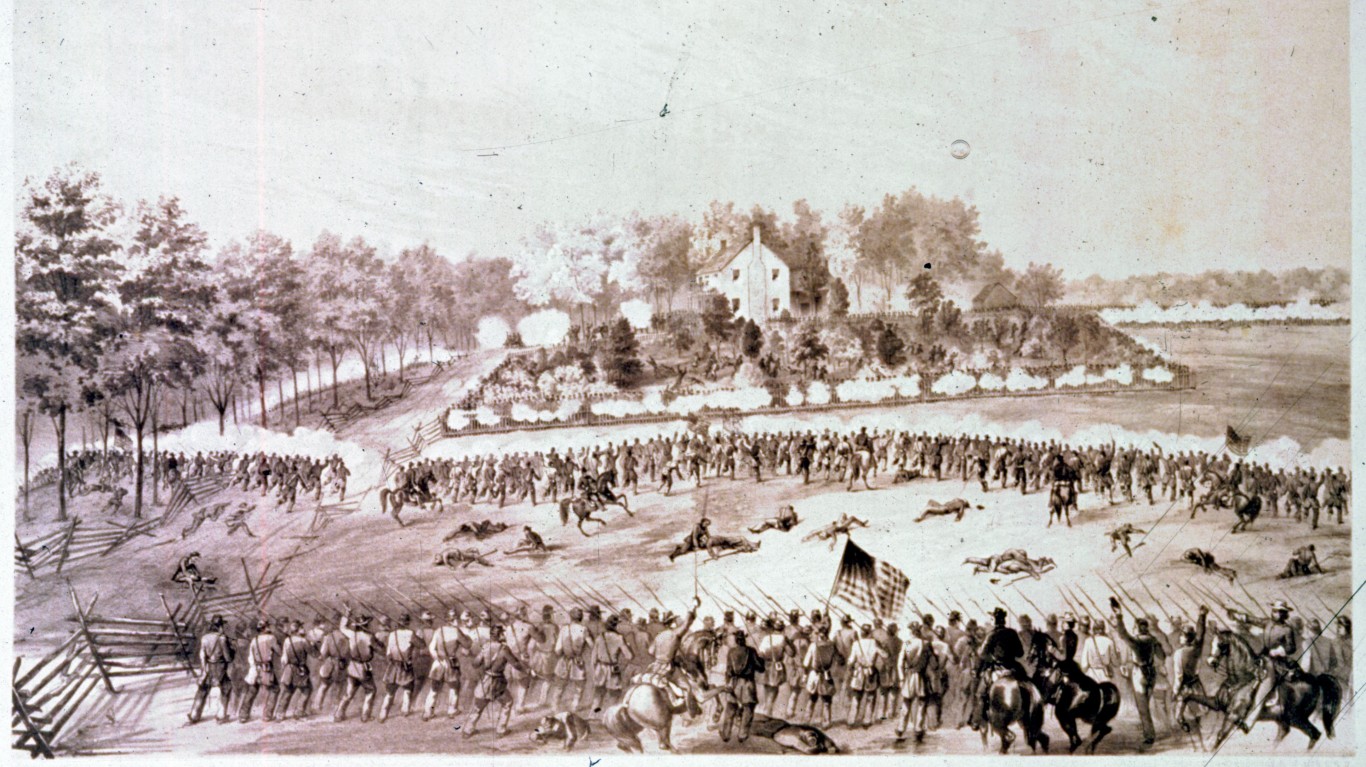 24/7 Wall St.
24/7 Wall St.



